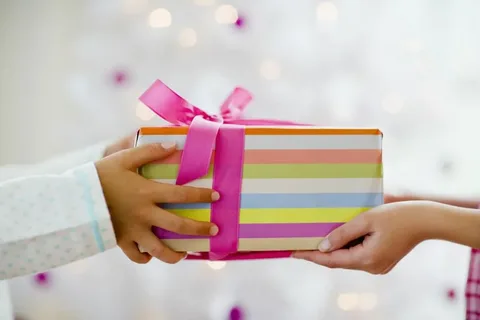Play and Learning Gifts That Bring Joy to Blind Children

More ingenuity is required in choosing gifts for blind children rather than toys as such. A gift that can be entertaining and instructive at the same time will be more considerate and valuable. Sensory play can be a powerful way of stimulating the mind of a visually impaired child, accelerating their development, and bringing joy into their life. Sensory play allows them to explore through touch, sound, and even sometimes taste or smell, affording them opportunities to learn about the world in a way that is meaningful to them.
In this blog, we are going to discuss sensory play and how special gifts for blind children enhance their sensory experiences, inspire creativity, and further help them in their learning process. If you are looking for presents that would be both enjoyable and helpful, then read on for the most engaging and empowering gift ideas for blind children that bring joy and help to thrive.
Why Sensory Play Matters for Blind Children
All children need sensory play, but for a blind child, it is most important. They may not see the world around them, so sensory play opens up their world in ways they never thought possible. It helps them connect with their environment using other senses: primarily touch, sound, smell, and even taste.
Such play in sensors nurtures creativity, cognitive development, motor skills, and emotional well-being. In the case of blind children, sensory toys and activities are an important way for them to gain vital learning experiences in developing a closer relationship with their surroundings and building more profound knowledge of the world.
Gifts to Blind Children: Stimulating Sensory Play When it comes to fun, learning, and exploration, sensory play allows blind children to actively get involved with the world around them. Now, let's see some great gift ideas all associated with sensory engagement.
1. Explorative Tactile Toys
Tactile toys are the best presents for blind children because of their hands-on way of understanding the world. They are designed in such a manner that there is something for the children to feel, an invitation for them to reach out and understand. These provide the richest sensory experience a child needs to develop his or her sense of touch, from soft fabrics to bumpy surfaces.
Another very popular tactile toy is a sensory ball, in which a ball covered with bumps or textured ridges is manipulated by the fingers. These materials eventually contribute to the encouragement of fine motor skills and further help children understand the concept of spatial relationships. The simple rubber ball could give hours of sensory play and learning, provided it has varied textures, sounds, or even scents.
One personal experience I have with fidget toys is when one gave a sensory ball to a young child in my extended family who is blind. The child loved the different textures and the noises the ball would make as it rolled across the floor. It was one of those heartwarming moments-just how such a simple gift could bring so much joy.
The ball was important in developing tactile awareness; however, it also dramatized the moving aspect of physical activity.
2. Music instruments and sound-emitting toys
Musical instruments or sound-emitting toys can be another great gift for blind children. For visually impaired kids, the sense of sound offers a very powerful sensory experience, and such musical toys would allow them to investigate rhythm, melody, and cause-and-effect relationships.
Musical instruments, such as a xylophone, a drum, or a tambourine, are great for introducing small children to sound in a game. Most music toys for blind children are designed in such a way that, when touched, large buttons or keys can be easily pressed or hit to change a sound. Such toys advance the auditory discrimination of children, which is one of the very important skills that enable a child to identify different sounds and understand what they mean.
An excellent example of a toy that comes to mind in this case would be a bright, colored xylophone producing a range of different musical notes upon being struck. This child who was given this toy loved not only the sounds but also learned how to match sounds with certain actions-a very important skill in learning, both musically and generally speaking. With each stroke of the bar, he began to grasp the correlation between his actions and the outputs of sounds he created.
Braille Books and Storytelling Toys
Braille books make a great gift for children learning to read or in the early developmental years of literacy. Braille books allow the blind child to read and explore a story with personal independence through sensations in reading. They are usually made of raised dots and symbols which represent letters and words, allowing the hands-on experience of reading.
Apart from Braille books, another good alternative can be story-telling toys. Toys with buttons or switches to turn on audio stories or sound effects make the stories real in a way that fosters creativity and assists in developing listening skills. While some of these toys are designed to read aloud an entire story, others feature interactive sound effects and characters with which children can interact.
I once gave a Braille alphabet book to a young girl learning to read. Immediately, she was drawn to tracing the raised dots on each page and lit up when she "read" her first few words. It was kind of inspiring to witness her excitement and reminded me of the importance of providing books and materials available to all children.
4. Stinky Playdough or Sensory Kits
Other great gifts for blind children include scented playdough and sensory kits. These kits are uniquely designed to stimulate the sense of touch, smell, and sometimes even sound, hence creating multisensory playing in one or many ways. They may also comprise soft fabrics, textured items, and some soap natural fragrances like lavender or vanilla. Sensory kits help develop creativity and can also help kids cognize different textures and smells, which become very important senses for blind children.
Scented play-dough is also one of the best media for giving children experiences with different textures while tantalizing their olfactory organs. A few manufacturers of play-dough make a batch with variations in colors, scents, and textures that give children a good opportunity to engage their senses in identifying and differentiating said qualities.
I've been witness to the depth of delight caused by scented playdough. A child I knew, with visual impairments, adored the lavender-scented playdough because the smell could help guide them as they shaped it. It became an important part of daily playtime. Playdough is not only fun but also builds different fine motor movements in children as they mold, roll, and shape the dough.
5. Interactive Learning Toys
Interactive games and toys that emphasize the senses of sound, touch, and movement are ideal gifts for a blind child, as these evoke problem-solving and cognitive development. Pressing buttons often triggers such toys to ring, flash lights, or move accordingly. These are actually designed to involve children in learning by cause and effect, whereby they experiment with the environment around them in a fun and interactive way.
Examples include talking toys or touch-and-feel toys-that have the added element of making a noise once a child presses a button, thereby developing in children who are blind or with low vision the sense of cause and effect. Some toys also come with Braille labels to make them accessible for children learning Braille.
A particular example is a tactile-auditory toy, where one receives various interesting facts or sounds on various subjects, like animals, numbers, or shapes. These toys keep the child engaged and allow them to learn new things with the help of stimulating their senses of touch and hearing.
6. Sensory Bins
A great gift your blind child might want is a sensory bin for those who enjoy engaging in tactiles. These bins come stocked full with rice, beans, sand, or even water beads. Oftentimes, there are hidden things within them for children to find by touching. Sensory bins invite children to actively use their hands to search, explore, and learn while stimulating multiple senses.
Sensory bins can be adapted to your individual child's interest and stage of development. You can add toys, figurines, or objects from everyday life that invite imaginative playing and tactile exploration. For this, I prepared a sensory bin with soft fabric items and small, differently textured toys a blind child could engage with. It was within this bin that this child found one of his favorite activities. He loved to dig through the bin looking for various objects, and this helped him further his development in both tactility and problem-solving.
Conclusion:
The Delight of Giving Sensory Gifts Therefore, choosing gifts for blind children that promote sensory play and learning is not just about making them happy, but also in a special way empowering them to learn and survive in this world. Such sensory gifts will help children build up important skills, get creative, and connect more with things happening around them.
You give them an opportunity to learn, grow, and prosper by giving them gifts that maybe stir their senses and encourage them to see the world. This is why the best gifts for blind children are those that stimulate them fully through touch, sound, smell, or a combination of these senses.
Sensory play forms an indispensable part of childhood development. With just the right gift, you will be building a difference in a child's life. Every time you go out to look for a meaningful gift for a blind child, stop and reflect on how it will feed their senses and lead to learning and joy.










